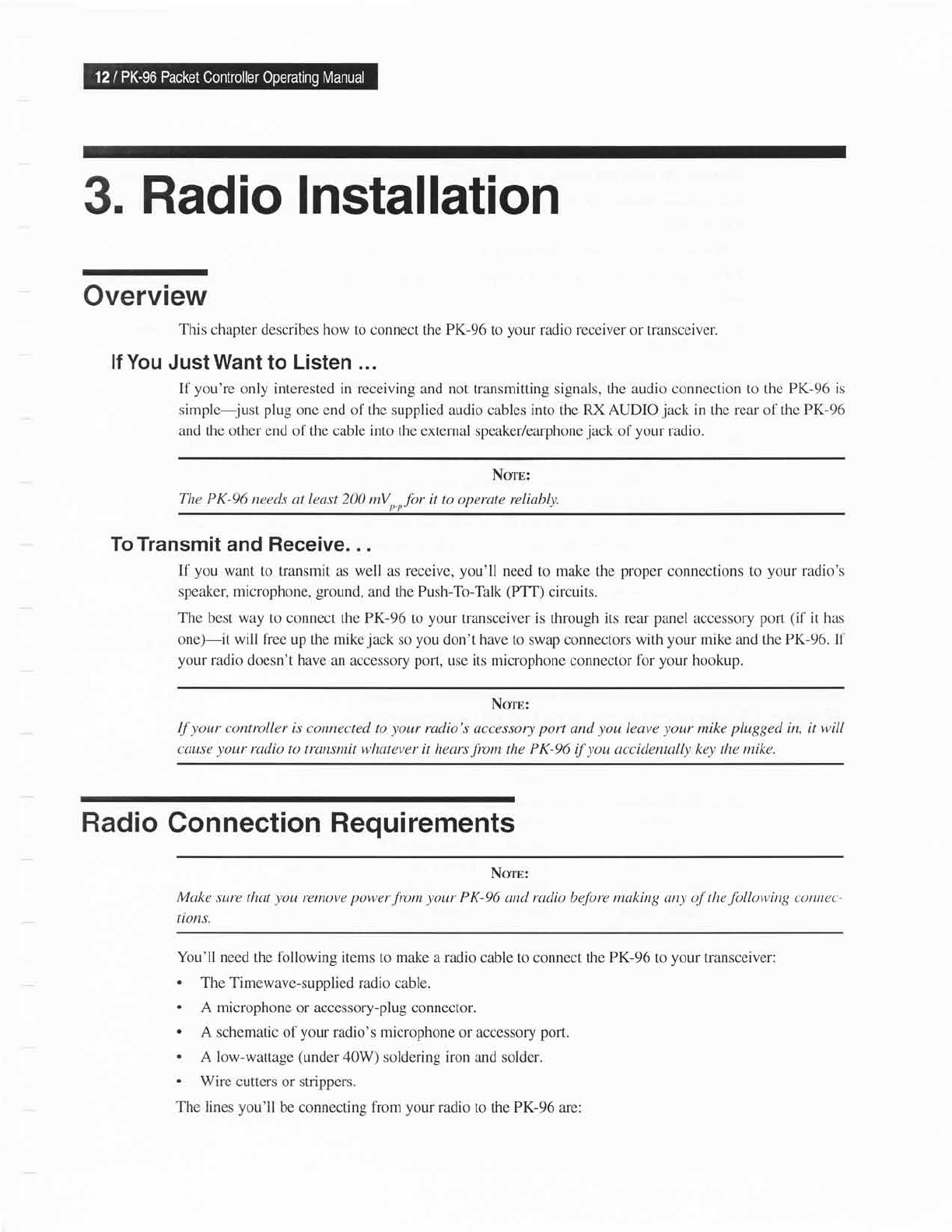Specifications
Table Of Contents

3.
Radio Installation
Overview
This
chapter describes how to connect the PK-96 to
your
radio receiver or transceiver.
lf You
JustWant to
Listen
...
If
you're
only
interested in receiving and
not transmitting signals, the audio
connection to the PK-96
is
simple-just
plug
one end of the supplied
audio cables into the
RX AUDIO
jack
in the rear of the PK-96
and
the other end of the cable into the external speaker/earphone
jack
of
your
radio.
Ncnn:
The PK-96 needs at
least
200
*V,,,,fo, it to operate reliably.
To Transmit and Receive. . .
If
you
want
to transmit as well as receive,
you'll
need
to
make
the
proper
connections to
your
radio's
speaker, microphone,
ground,
and the
Push-To-Talk
(PTT)
circuits.
The best way
to connect the PK-96 to
your
transceiver is
through
its rear
panel
accessory
port
(if
it has
one)-it will
f'ree up the mike
jack
so
you
don't have to
swap connectors
with
your
mike and the PK-96.
If
your
radio doesn't have
an accessory
port,
use its microphone connector fbr
your
hookup.
Ncnn:
If
your
controller is connected to
your
radio's
accessory
port
and
you
leave
your
mike
plugged
in, it will
cause
your
rudio
to transmit whatever it hears
from
the PK-96
if
you
accidentalLy
key the mike.
Radio
Connection
Requirements
NcnB:
Make sure
thcLt
you
remove
powerfrom your
PK-96 and radio before making ctny of the
following
con.n.eL'-
tions.
You'll need the fbllowing items
to
make
a
radio
cable to connect the PK-96 to
your
transceiver:
.
The Timewave-supplied radio
cable.
.
A microphone
or accessory-plug connector.
.
A
schematic of
your
radio's microphone or
accessory
port.
.
A low-wattage
(under
40W) soldering iron and solder.
.
Wire
cutters or strippers.
The iines
you'll
be connecting from
your
radio
to the
PK-96
are:










